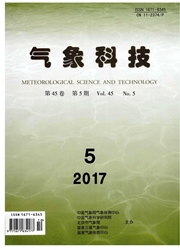

 中文摘要:
中文摘要:
利用中尺度模式HWRF(Hurricane Weather Research and Forecast System)模拟双热带气旋“狮子山”(2010)与“南川”(2010)涡旋合并过程,并通过强度敏感性试验揭示两涡旋强度对合并过程的影响.分析表明:在两者的合并过程中,“狮子山”涡旋强度明显大于“南川”;“狮子山”涡旋对“南川”涡旋具有更大的“吸引”效应,两者西侧呈相对强的能量、水汽“连体”通道.HWRF能够较好的模拟出双热带气旋“狮子山”与“南川”的强度、移动路径,尤其是两涡旋的合并过程.进一步分析控制试验双热带气旋水平与垂直结构揭示出两涡旋“互旋”过程中,“弱涡旋”并入“强涡旋”相互影响特征.有关“狮子山”与“南川”强度的敏感试验亦表明,两者各自涡旋强度“合并方向”具有关键影响.在敏感性试验中,改变涡旋强度后两者路径亦存在“互旋”现象,但与控制试验两涡旋“合并方向”相反,即敏感性试验热带气旋“狮子山”涡旋削弱,而“南川”涡旋强度相对增强,导致原涡旋西侧水汽、能量输送连体通道明显削弱,同时由于“南川”涡旋的强度强于“狮子山”,两者东侧水汽、能量输送通道亦加强,导致“南川”涡旋对“狮子山”的涡旋存在“吸引”效应.“狮子山”涡旋残留云带一部分合并入“南川”,一部分则随西南气流进入台风“圆规”.
 英文摘要:
英文摘要:
The effects of varying intensity on the simulation of the merging of binary tropical cyclone (TC) Lionrock (2010) and Namtheum (2010) are studied using the HWRF (Hurricane Weather Research and Forecast System) mesoscale model.It is shown that the model reproduces well the intensity,track,and merging features of two TCs.Detailed analyses of the control experiment show that the intensity of Lionrock was stronger than that of Namtheum and attracted Namtheum significantly; a connected relatively high energy and water vapor channel,which linked the circulations of Lionrock and Namtheum,existed in the west of the two TCs.In the merging process of two TCs,Lionrock destroyed Namtheum's structure.The rainbands of Namtheum merged with those of Lionrock.Sensitive experiments indicate that the intensity of Lionrock weakens,but the intensify of Namtheum strengthens; the two TCs still rotates and attract each other,but the merging direction is inversed.
 同期刊论文项目
同期刊论文项目
 同项目期刊论文
同项目期刊论文
 期刊信息
期刊信息
